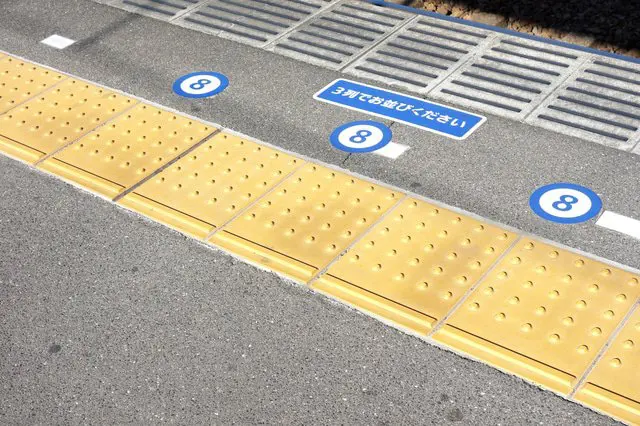What You Should Know About Japanese Trains (Etiquette)

Trains are one of the basic transportation means of getting around Japan. Here we describe some train-boarding rules and etiquette.
Buying train tickets can be something of a struggle in an unfamiliar country, but it is also part of the charm of traveling. We previously published a separate article explaining how to handle ticket purchases before boarding, so please feel free to take a look at that article as well.
Reference article: What You Should Know About Japanese Trains (How to Take Trains) (Japanese)
In this article, we will be showcasing some unique Japanese train-riding etiquette.
Getting on the Train
After passing through the ticket gate, check the signboards to confirm where you should board and proceed to line up at that platform.

In Japan, passengers board and alight the trains at designated spots that are clearly marked on the ground. Trains will stop at different points along the platform depending on their type. If you see someone standing idly, odds are that they are waiting at one of these spots. Once you figure out exactly where to board, you can call yourself a Japanese train expert.
When the train arrives, allow passengers to alight first. Line up on either side of the door and wait till passengers exit before boarding. The same goes for other Japanese public transportation like buses, where alighting passengers are always given priority.

Though most seating on regular trains are on a first-come first-served basis, priority seating intended for use by pregnant women, the elderly, the injured and the physically handicapped are also available. If you sit in priority seating, always pay attention to fellow passengers who need it more than you and relinquish your seat if the situation arises. Trains may experience occasional abrupt jolts, so hold on to one of the straps securely when standing.
Things to Note While Inside the Train and at the Station
Trains are a vital means of transportation for people living in Japan. Young children and the elderly use them regularly as well. In order for everyone to feel comfortable and safe, there are some rules you should abide by. Here, we have compiled a list of rules and etiquette for passengers which we would like to share with you.
First, refrain from placing belongings on the seat to free up seating space; store them on the baggage rack located above the seats instead. Though Japan is quite a safe country and theft is rare, keep an eye on your belongings and ensure you do not leave anything behind when alighting.
With the exception of smoking rooms, all train stations and platforms are deemed as non-smoking areas. Eating and drinking in trains is basically prohibited inside the train. Refrain from eating, and smoke only in designated areas. Littering is also prohibited, so remember to take your trash with you and dispose of it appropriately.

Train interiors are comfortably air-conditioned or heated depending on the season. Japanese summers are particularly humid so it can be really refreshing to have cool air, but on the flip side sometimes the train interior can get a little too cold. Should this be the case, you can move to a car marked with the Weak Air-Conditioning Car (弱冷房車, Jakurei Bousha) sign, which indicates that the air-conditioning in that car is set to a higher temperature.
Some train cars have zones catered specifically for people with baby strollers or in wheelchairs. Station staff will assist wheelchair-bound passengers when getting on and off the train. Station employees are very friendly and you can ask them anything including buying tickets, where to board, where to change trains, where exits are located, etc.

Finally, images of Japanese commuters jam-packed into trains are often shown on television dramas overseas. Luckily, that is not how trains are like every day. Depending on the station and the train’s route, station traffic generally peaks on weekdays from 7:30 am to 9:00 am in the morning, and from 6:00 pm to 9:00 pm in the evening. Some train cars are designated as women-only during this time period, which can be convenient for female passengers and mothers with children. In addition, the last train on weekends and right before a three-day holiday is also crowded, so we recommend you try to avoid this one and take an earlier train if possible.
That is all for our guide about the basics of riding trains in Japan. With your new-found knowledge, we hope you can navigate the train system easily and enjoy your trip to the fullest extent.
Related articles: 13 Common Sense Rules For When You Ride The Train (Japanese)
All pictures from PIXTA
This is the official account of MATCHA's editorial department. Our articles feature useful travel information for visitors to Japan, from how-to guides to recommended places to visit.

































![[2026] Top 5 Strawberry Picking Spots in Tokushima, Naruto| Farms and Access Guide for January to May](https://resources.matcha-jp.com/resize/720x2000/2025/03/06-227165.webp)
![[Yamanashi/ Hokuto City] 4 Hot New Spots Opening in 2026](https://resources.matcha-jp.com/resize/720x2000/2025/12/12-252747.webp)


